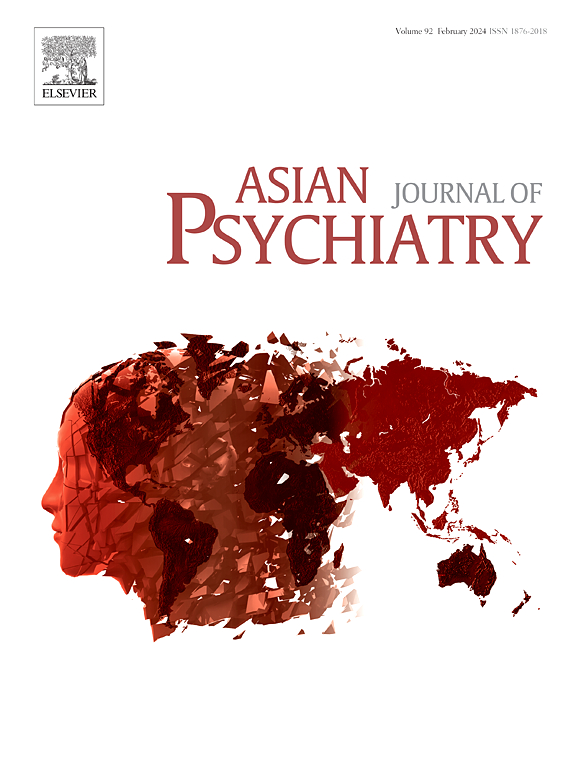高清晰度经颅直流电刺激(HD-tDCS)对持续性听言语幻觉精神分裂症患者静息脑功能连通性的影响
IF 3.8
4区 医学
Q1 PSYCHIATRY
引用次数: 0
摘要
高清晰度经颅直流电刺激(HD-tDCS)是一种新兴的神经调节技术,用于治疗精神分裂症(SZ)中听觉言语幻觉(AVH),这种幻觉对精神药物治疗反应不充分。我们不知道任何功能性磁共振成像(fMRI)研究检查HD-tDCS对SZ AVH的神经效应。在这项研究中,我们使用fMRI检查了mri神经导航HD-tDCS对伴有持续性AVH的SZ患者(N = 34)功能性脑连通性的影响。HD-tDCS采用双盲、随机、平行组、假对照设计(5天,每天两次,每次20分钟)。静息状态fMRI数据使用3 T扫描仪获取。与假手术相比,活跃的HD-tDCS治疗导致静息状态功能连通性的显著变化,包括Heschl回、颞顶连接、尾状核、楔前叶、枕侧皮质和海马。我们的研究表明,HD-tDCS导致SZ中与AVH发病机制有关的区域的脑连通性改变。本文章由计算机程序翻译,如有差异,请以英文原文为准。
Effects of high-definition transcranial direct current stimulation (HD-tDCS) on resting brain functional connectivity in schizophrenia patients with persistent auditory verbal hallucinations
High-definition transcranial Direct Current Stimulation (HD-tDCS) is an emerging neuromodulation technique for treating auditory verbal hallucinations (AVH) in schizophrenia (SZ) that do not respond adequately to psychotropic treatments. We are unaware of any functional Magnetic Resonance Imaging (fMRI) study examining the neural effect of HD-tDCS on AVH in SZ. In this study, we examined the effect of MRI-neuronavigated HD-tDCS on functional brain connectivity using fMRI in SZ patients (N = 34) with persistent AVH. HD-tDCS was delivered in a double-blind, randomized, parallel-arm, sham-controlled design (5 days of twice daily, 20-minute sessions). The resting-state fMRI data was acquired using a 3 T scanner. Active HD-tDCS treatment, in comparison to the sham, resulted in significant changes in the resting-state functional connectivity involving Heschl’s gyrus, temporoparietal junction, caudate nucleus, precuneus, lateral occipital cortex, and hippocampus. Our study shows that HD-tDCS causes brain connectivity changes in regions implicated in AVH pathogenesis in SZ.
求助全文
通过发布文献求助,成功后即可免费获取论文全文。
去求助
来源期刊

Asian journal of psychiatry
Medicine-Psychiatry and Mental Health
CiteScore
12.70
自引率
5.30%
发文量
297
审稿时长
35 days
期刊介绍:
The Asian Journal of Psychiatry serves as a comprehensive resource for psychiatrists, mental health clinicians, neurologists, physicians, mental health students, and policymakers. Its goal is to facilitate the exchange of research findings and clinical practices between Asia and the global community. The journal focuses on psychiatric research relevant to Asia, covering preclinical, clinical, service system, and policy development topics. It also highlights the socio-cultural diversity of the region in relation to mental health.
 求助内容:
求助内容: 应助结果提醒方式:
应助结果提醒方式:


